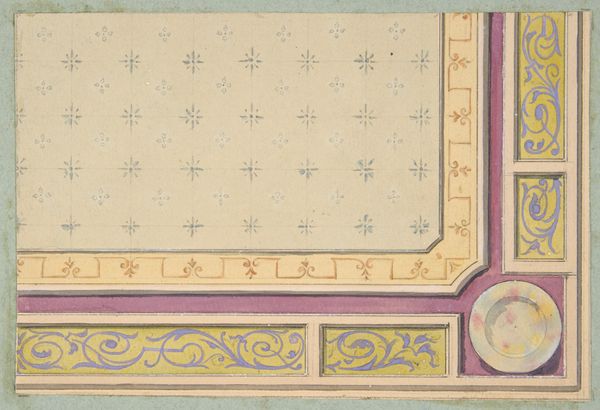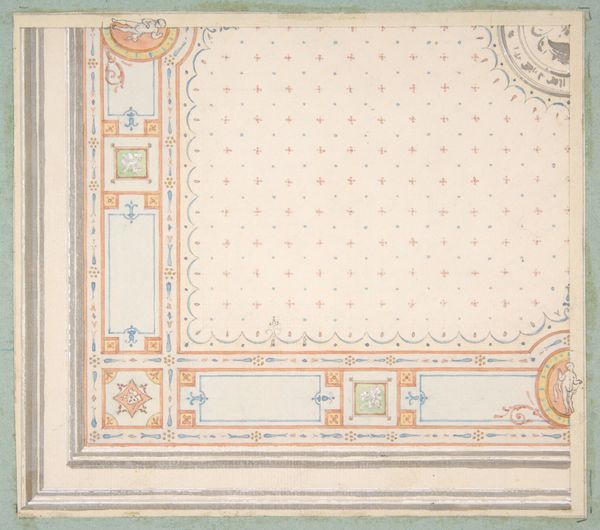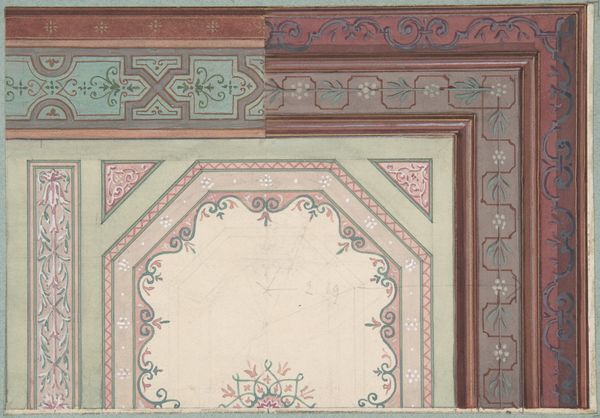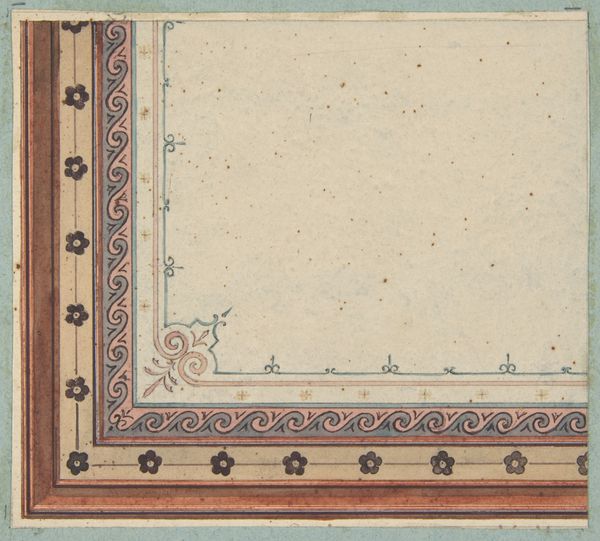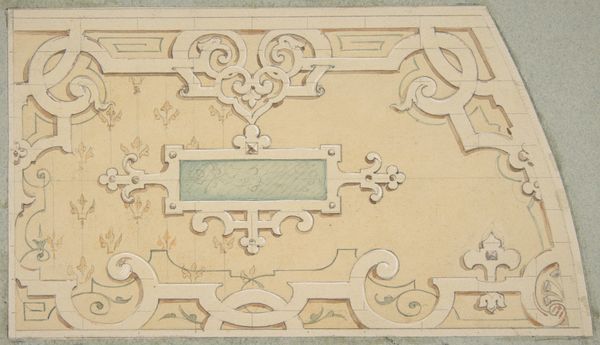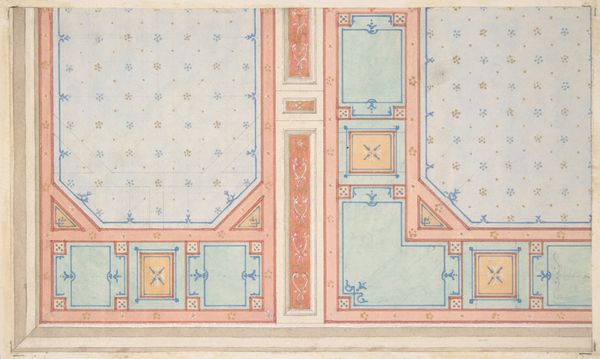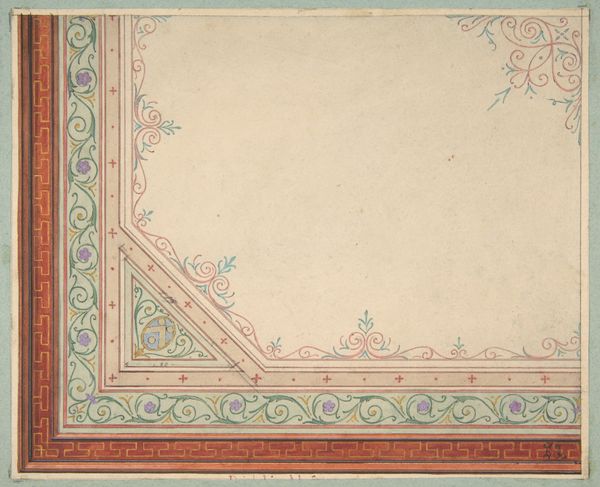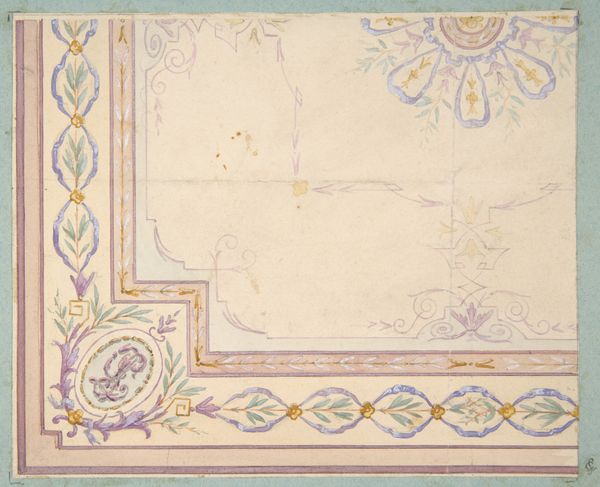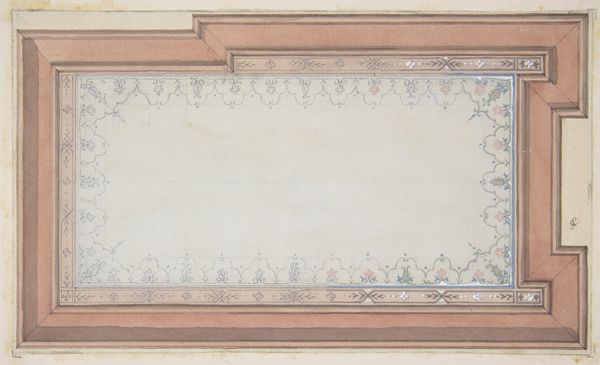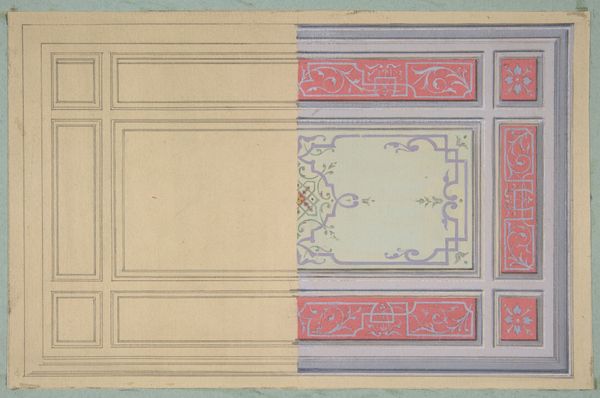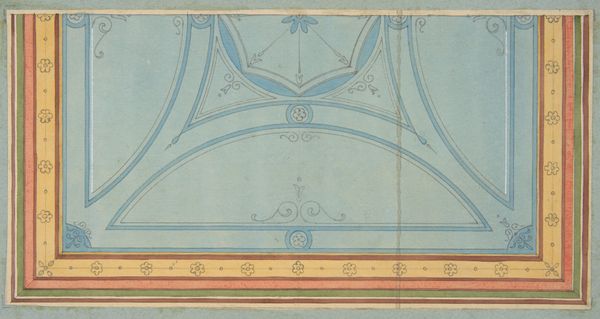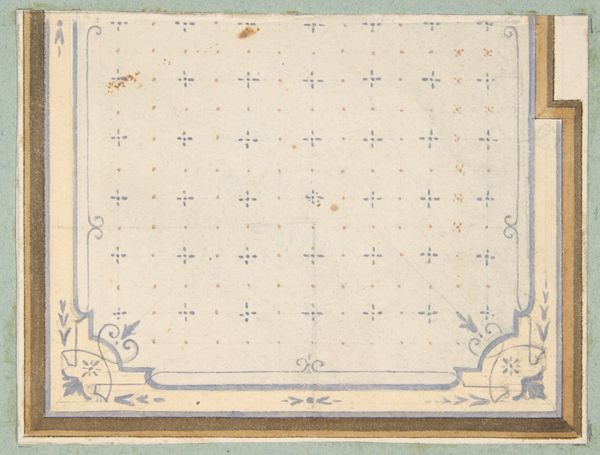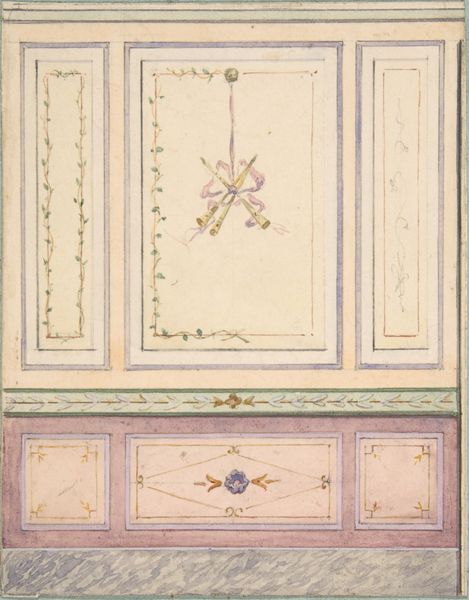
drawing, watercolor, architecture
#
drawing
#
watercolor
#
geometric
#
decorative-art
#
architecture
Dimensions: Overall: 8 1/4 x 10 11/16 in. (21 x 27.2 cm)
Copyright: Public Domain
Editor: This delicate drawing, "Design for a Ceiling," is attributed to Jules-Edmond-Charles Lachaise, created sometime between 1850 and 1900. The artist used watercolor to present their vision. I find it interesting that so much effort was put into the design of spaces usually ignored. What kind of social context could have prompted this emphasis on ceiling art? Curator: Well, let's think about the function of decorative art during the 19th century. Architecture became a powerful signifier of social status. Details in private and public spaces signified taste and, by extension, refinement, a concept of crucial importance for maintaining class differences during that period. Can you observe specific elements suggesting historical styles or elite tastes? Editor: Yes, I see recurring geometric and floral patterns reminiscent of classical ornamentation, adapted and perhaps simplified. It also reminds me a little of textile design. I’m thinking about, for example, the red decorative shapes along what I understand is a section of the design closest to where the walls meet the ceiling. Did ceiling designs play any role beyond just indicating social status? Curator: Absolutely! Think about the rise of industrialization. Detailed, handmade decorations became less accessible. Ceiling designs allowed architects and homeowners to reference historical styles, signaling wealth while embracing evolving, if sometimes problematic, ideas about progress and mass production. How might the medium, watercolor, reflect or challenge these social dynamics? Editor: It adds another layer to the picture you just described; even if intended for wider access, it looks like it’s not the final, definitive version to be put into mass production. A study, an exploratory design more than the product itself. Curator: Exactly. Watercolor on paper feels distinctly intimate, almost contradicting the public display the final ceiling would eventually afford. Editor: So this wasn't merely a blueprint, but also a statement in itself. That’s really insightful, thanks! Curator: And for me, thinking about design in relationship to mass production allows me to read through other art forms, even paintings! A very fruitful connection.
Comments
No comments
Be the first to comment and join the conversation on the ultimate creative platform.
